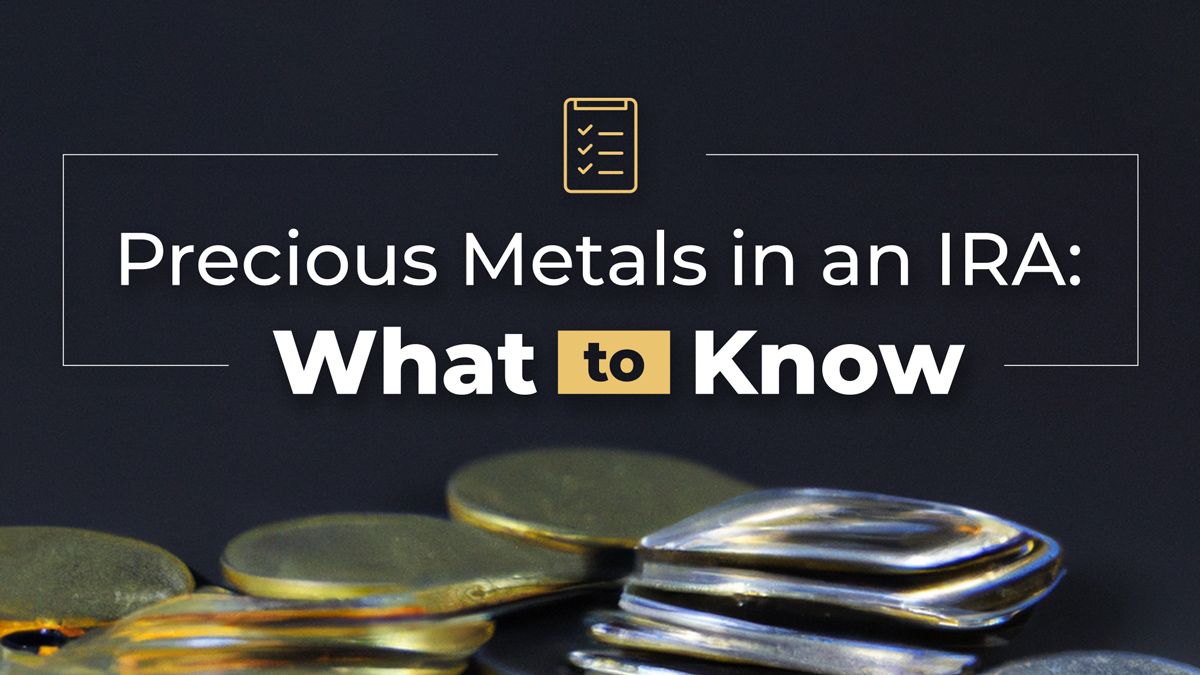Investing in precious metals: what you need to know
 Investing in Precious Metals: What You Need to Know
Investing in Precious Metals: What You Need to Know
Precious metal investment involves acquiring assets like gold, silver, platinum, and palladium, often as a hedge against inflation, economic uncertainty, or portfolio diversification. Historically, these metals have served as stores of value, maintaining purchasing power across centuries. This exploration will delve into the various aspects of this investment strategy, covering key considerations for informed decision-making.
The importance of precious metals in investment portfolios stems from their inherent properties: scarcity, durability, and universal recognition. Their historical performance during times of economic volatility has cemented their role as a safe haven asset. Understanding their historical context—from ancient civilizations using gold as currency to their modern-day applications in finance and technology—provides crucial perspective on their value proposition.
This article will cover crucial topics such as the different ways to invest in precious metals (physical bullion, exchange-traded funds (ETFs), mining stocks), risk management strategies, and the importance of considering market trends and geopolitical factors.

FAQs about Precious Metal Investments
This section addresses frequently asked questions to provide clarity and dispel common misconceptions surrounding precious metal investment.
Question 1: What are the different ways to invest in precious metals?
Investment options include purchasing physical bullion (bars and coins), investing in precious metal mining stocks, or utilizing exchange-traded funds (ETFs) that track precious metal prices. Each method carries unique risks and rewards.
Question 2: How much risk is involved in precious metal investments?
While often considered a safe haven, precious metal prices fluctuate. Market volatility, economic conditions, and geopolitical events can significantly influence prices. Diversification and a long-term investment strategy are crucial to mitigate risks.
Question 3: What are the tax implications of investing in precious metals?
Tax implications vary depending on the jurisdiction and investment method. Capital gains taxes may apply upon the sale of physical bullion or ETFs. Consult a tax professional for personalized guidance.
Question 4: How can I store precious metals securely?
Secure storage is paramount. Options include home safes, bank safety deposit boxes, or specialized storage facilities. The choice depends on the quantity and value of the metals held.
Question 5: Are precious metals a good inflation hedge?
Historically, precious metals have served as an inflation hedge, maintaining or increasing their value during periods of rising inflation. However, this is not guaranteed, and their performance can vary.
Question 6: How do I determine the fair market value of precious metals?
Market prices are readily available from reputable sources, including financial news websites and precious metals dealers. However, it's important to factor in premiums and commissions when determining actual cost.
Understanding these factors is crucial for making informed investment decisions.
Tips for Precious Metal Investments
These suggestions aim to guide individuals toward a more successful and informed approach to precious metal investment.
Tip 1: Diversify your holdings: Don't put all your investment eggs in one basket. Diversify across different precious metals and other asset classes.
Tip 2: Conduct thorough research: Understand market trends, geopolitical influences, and the specific properties of each metal before investing.
Tip 3: Use reputable dealers: Purchase from established and reputable dealers to avoid counterfeit products or scams.
Tip 4: Consider long-term investment: Precious metal investments are often best viewed as a long-term strategy rather than a short-term trading opportunity.
Tip 5: Develop a risk management plan: Determine your risk tolerance and develop a strategy to manage potential losses.
Tip 6: Stay informed about market conditions: Regularly monitor market news and economic indicators to adjust your investment strategy as needed.
Tip 7: Seek professional advice: Consult with a financial advisor to receive personalized guidance tailored to your financial goals and risk tolerance.
Tip 8: Securely store your investments: Employ secure storage solutions appropriate to the quantity and value of your holdings.
By following these tips, investors can increase their chances of achieving a successful and responsible approach to precious metal investment.
Conclusion on Precious Metal Investments
This exploration has illuminated the various facets of precious metal investment, encompassing the different investment vehicles available, associated risks, and the importance of a well-informed approach. From the historical context showcasing their enduring value to the contemporary considerations of market volatility and geopolitical factors, a comprehensive understanding is vital for success.
The long-term outlook for precious metals remains complex, influenced by global economic conditions and technological advancements. However, their inherent qualities as a store of value and a hedge against inflation continue to underpin their importance in diversified investment portfolios. Careful consideration of personal financial goals, risk tolerance, and thorough research are essential steps toward making informed investment decisions in this dynamic market.

Published on: 2025-04-06T16:46:07.000Z
